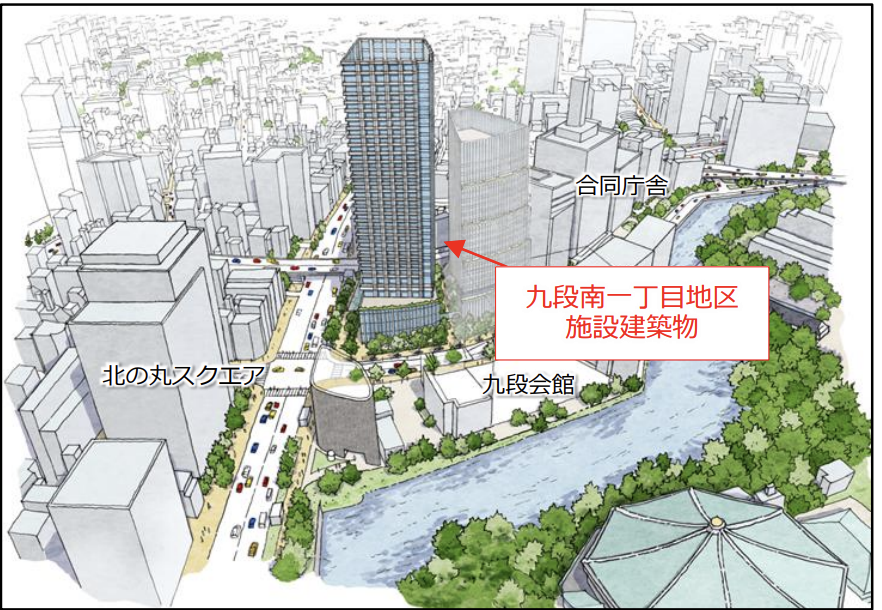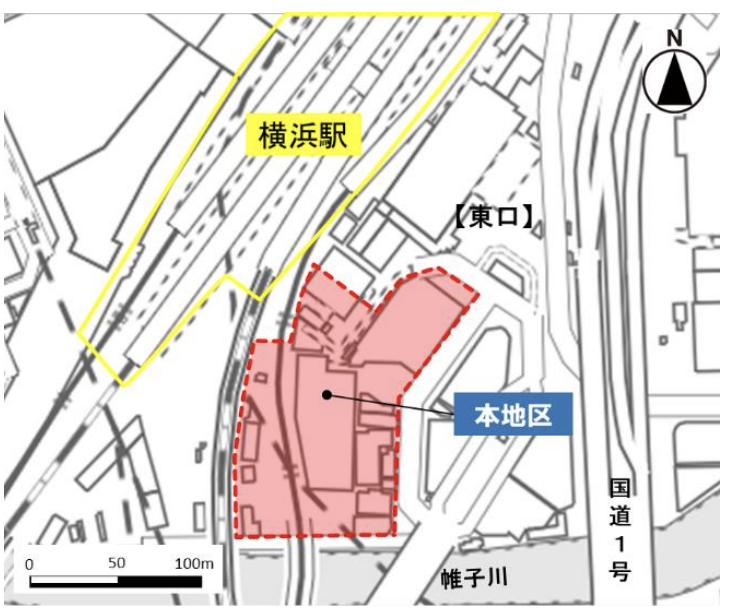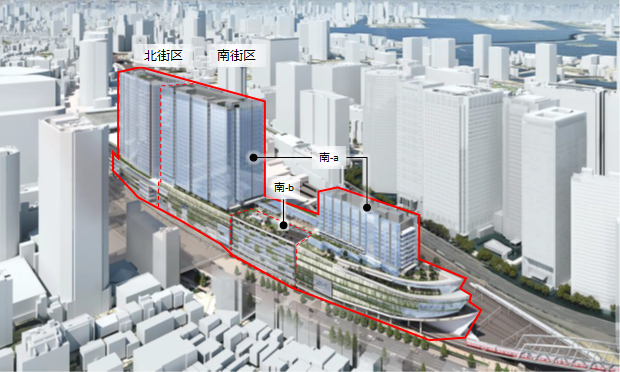Have you heard of a new development method called " vibrocoding " that has been gaining attention in the field of AI programming in recent years?
While conventional programming requires developers to write detailed code line by line, vibrocoding makes it possible to build systems and applications simply by giving instructions to the AI in natural language.
In the real estate industry in particular, vibrocoding is expected to be used in a variety of tasks, such as building property management systems, developing price assessment tools, and automating customer service.
In this article, INA&Associates, Inc. will provide a detailed explanation of vibe coding from a practical perspective, from the basic concept to specific applications in the real estate tech field.
This is a must-see for real estate operators who want to promote real estate DX and improve operational efficiency.
Basic Concept of Vibe Coding
What is VibeCoding?
VibeCoding is an innovative development method in which developers use natural language to give instructions to AI, which then automatically generates program code.
As the word "Vibe" suggests, the developer simply communicates the mood or intention of "this is the kind of system I want," and the AI generates the appropriate code.
In conventional programming, developers need to be familiar with the syntax of the programming language and think about detailed implementation methods. VibeCoding, however, takes advantage of the concept of natural language programming to enable development simply by explaining the system requirements in Japanese or English.
Differences from Conventional Programming
The following table summarizes the main differences between conventional programming methods and vibrocoding.
| Item | Conventional Programming | Vibe Coding |
|---|---|---|
| Required Skills | Mastery of programming language | Ability to define requirements in natural language |
| Development Time | Weeks to months | Hours to days |
| Code quality | Depends on developer skills | Based on AI training data |
| Maintainability | Continuous maintenance by developers | Automatic correction and improvement by AI |
| Learning cost | High (requires expertise) | Low (possible with business knowledge) |
Collaboration style with AI
Collaboration with AI in vibe coding represents a major shift from the traditional "human writes code" style to a "human and AI interact and develop" style.
The developer's role is shifting from detailed code implementation to defining system requirements, quality control, and effective communication with the code-generating AI.
In this new style of development, it is important for developers to have the following capabilities.
First, the ability to clearly verbalize business requirements: they must tell the AI exactly what functionality is needed and how they expect it to behave.
Second, the ability to assess the quality of the AI-generated code; they need to determine if the AI-generated code meets their requirements and is free of security issues.
Finally, it is the ability to make continuous improvements; you must be willing to interact with the AI to improve the system to make it better.
How Vibe Coding is Used in the Real Estate Industry
Development of property management systems
A typical example of AI application in the real estate industry is the development of property management systems.
Traditionally, the development of property management systems required specialized programming knowledge and a long development period. However, by utilizing vibe coding, real estate operators themselves can build customized systems in a short period of time.
For example, by simply telling the AI in natural language the requirements of "I want a system that manages tenant information for rental properties, automatically tracks rent payments, and alerts me when there are delinquent payments," a system with the necessary functions can be generated.
As specific application scenarios, the following functions can be realized with Vibracoding.
For the centralized property information management function, a system can be built to manage basic information, facility information, repair history, etc. of multiple properties in an integrated manner. The system automatically generates the database design and user interface.
The tenant management function allows you to create a system that collectively manages tenants' personal information, contract information, and rent payment status. By simply stating the requirement, "I want to manage basic tenant information and contract terms, and keep track of scheduled rent payments and actual payment dates," an appropriate data structure and user interface will be generated.
Building a Price Assessment Tool
VibeCoding is particularly powerful in the area of real estate price assessment AI.
Real estate price assessment is a complex task that involves a comprehensive judgment of many factors, including location, building age, surrounding environment, and market trends. In the past, it relied heavily on the knowledge and intuition of experienced real estate appraisers and sales representatives, but by utilizing Vibecoding, this knowledge can be systematized.
In the development of a price assessment tool, by communicating the requirement to AI that "we want to create a tool that calculates an appropriate sale price based on the property's location, age, area, distance from the nearest station, and contracted cases in the neighborhood," an assessment system incorporating machine learning algorithms is generated.
By utilizing such a tool, the following benefits can be expected
In improving the accuracy of assessments, objective analysis based on data will become possible in addition to subjective human judgment. More accurate price assessment can be realized by utilizing past contract examples and market data.
In terms of shortening appraisal time, the appraisal process, which used to take several hours, can now be completed in a few minutes. This enables quicker response to customers and differentiation from competitors.
Automation of Customer Response Systems
Automation of customer response is a key theme in the field of property tech.
In the real estate industry, many customer service tasks occur, such as responding to property inquiries, coordinating viewing appointments, and guiding customers through the contract process. By automating these tasks with vibe coding, human resources can be focused on higher value-added tasks.
In the construction of a chatbot system, by informing the AI of the requirement to "create a chatbot that automatically answers basic information about the property, price, and available viewing dates and times, and forwards detailed questions to the person in charge," a chatbot equipped with natural language processing functions is generated.
In a reservation management system, you can create a system that "accepts reservations for viewing, suggests available times by checking them against the schedule of the person in charge, and automatically sends a confirmation e-mail after the reservation is confirmed" simply by giving instructions in natural language.
A customer information management system can be built to centrally manage inquiry history, preferences, and response status, enabling the staff in charge to efficiently respond to customers.
Creating Marketing Tools
Improving the efficiency of marketing activities is an important issue in the use of real estate tech.
By utilizing vibe coding, marketing tools that effectively communicate the appeal of properties can be developed in a short period of time.
In the automatic generation of property introduction websites, by communicating the requirement to "automatically generate an attractive property introduction page by combining property photos, floor plans, and information on the surrounding environment," a website compatible with responsive design is created.
In the e-mail distribution system, a system can be constructed to automatically distribute information on new properties that match the customer's desired conditions. This can be achieved with the instruction, "I want to automatically send out an e-mail when a property that matches the customer's desired area, budget, and floor plan conditions is registered.
The SNS Posting Automation Tool allows you to create a system that automatically posts information on new listings to various SNS platforms. This can significantly reduce the workload of marketing staff.
Advantages of Introduction and Points to Note
Increased development efficiency
The greatest benefit of vibe coding is the dramatic improvement in development efficiency.
In conventional system development, the process from requirements definition to design, implementation, and testing generally takes several months to several years. However, by utilizing vibe coding, this period can be drastically shortened.
The following improvements can be expected, as illustrated by specific figures for the effect of shortened development time.
| Development process | Conventional development period | Vibe Coding | Shortening rate |
|---|---|---|---|
| Requirement Definition | 2-4 weeks | 1-2 days | 90% or more |
| Basic design | 4-8 weeks | 1-3 days | 95% or more |
| Detailed Design | 6-12 weeks | Auto Generation | 100% implementation |
| Implementation | 8-20 weeks | 1-5 days | 95% or more |
| Unit Test | 2-4 weeks | Automated Execution | 90% min. |
This efficiency allows real estate operators to respond quickly to market changes. For example, systems can be modified to comply with new laws and regulations, or functions can be added in a short period of time to compete with competitors' new services.
Improved development efficiency also leads to more effective use of human resources. Human resources previously allocated to system development can be focused on core business activities such as customer service and sales activities.
Cost Reduction Effects
The introduction of vibrocoding can significantly reduce system development costs.
Conventional system development requires the hiring of specialized programmers and system engineers, which places a heavy burden on personnel costs. With vibe coding, existing business personnel can perform system development, thus reducing the cost of hiring specialized personnel.
Another major benefit is the reduction of outsourcing costs. In the past, outsourcing system development to an external IT company required costs ranging from several million yen to tens of millions of yen. By utilizing vibe coding, these outsourcing costs can be significantly reduced.
The reduction of maintenance and operation costs is also not to be overlooked: AI-generated code is generally highly maintainable and has a low bug rate, thus reducing long-term operation costs.
Specific cost reductions are shown in the table below.
| Cost Item | Conventional development | Vibe coding | Reduction rate |
|---|---|---|---|
| Development labor cost | 5-20 million yen | 50-2 million yen | 80-90% of |
| Outsourcing costs | 3-15 million yen | 0-1 million yen | 90-100 |
| Maintenance cost (per year) | 1-3 million yen | 20-50 million yen | 70-80% of total |
| Additional functionality fee | 500,000-2,000,000 yen | 50-200 thousand yen | 85-90% of the total cost |
Importance of Quality Control
When utilizing vibe coding, special attention should be paid to quality control.
The quality of AI-generated code depends greatly on the content of the instructions and the way they are expressed. Without proper quality control, systems may be generated that contain security vulnerabilities or functional defects.
The first key to quality control is to clarify the definition of requirements; instructions to the AI should be specific and clear, avoiding ambiguous expressions. Specific instructions such as "a system that allows access to the desired functions within three clicks" rather than "a system that is easy to use" are effective.
Verification of generated code is also essential, and a system should be in place for experts to check that AI-generated code meets requirements and that there are no security issues.
Establishing a continuous improvement process is also important. Even after the system is operational, a mechanism must be established to collect feedback from users and improve the system through dialogue with the AI.
Security Measures
Security measures are one of the most important issues in promoting real estate DX.
The real estate industry handles highly confidential data such as customers' personal information, property information, and contract information. Even in a system developed with vibe coding, this information must be properly protected.
In implementing data encryption, a system with built-in security features can be generated by giving the AI instructions that "the customer's personal information is to be stored in encrypted form and the system performs appropriate authentication when accessing the information.
For access control settings, an appropriate authority management function can be implemented by instructing the AI to "set appropriate privileges for each of the administrator, sales representative, and office staff, and a system that allows access only to necessary information.
For the log management function, a system that can detect unauthorized access can be constructed by requesting "a system that records system access history and data modification history and can detect unauthorized access.
Regular security updates are also important: AI-generated systems should also be regularly updated and patched to keep up with the latest security threats.
Conclusion.
Vibe Coding Will Transform the Real Estate Industry
Vibrocoding is an innovative technology that will accelerate digital transformation in the real estate industry.
While traditional system development requires specialized technical knowledge and long development times, vibrocoding allows real estate developers to build high-quality systems themselves in a short period of time.
VibeCoding can be used in a variety of business areas, including property management systems, real estate price assessment AI, automation of customer service, and development of marketing tools. By implementing these systems, you can simultaneously improve operational efficiency, reduce costs, and increase customer satisfaction.
Of particular importance is the fact that vibrocoding is a technology that increases the value of human capital. In conventional system development, only specialists with programming skills could be involved in system construction. However, vibrocoding allows on-site personnel with business knowledge to participate directly in system development.
Future Prospects
The use of vibe coding in the real estate tech sector is expected to expand further in the future.
Technological advances in AI will enable the development of more complex systems, and natural language instructions will become more intuitive. In addition, the development of AI models specific to the real estate industry's unique business processes is expected to generate more accurate systems.
In the field of property tech, we expect to see the creation of innovative services in combination with new technologies, such as linking with IoT devices, utilizing blockchain technology, and integrating VR and AR technologies.
Responding to changes in legal regulations is another important issue. The real estate industry is an industry with many legal regulations, and systems must be built that can respond quickly to changes in the law. By utilizing vibe coding, system modifications in response to legal revisions can be realized in a short period of time.
Proposals for Action for Practical Application
A step-by-step approach is effective for utilizing vibrocoding in actual operations.
We recommend starting with a small-scale system. It is important to start with relatively simple functions, such as customer information management and simple calculation tools, to understand the characteristics of vibrocoding.
Next, it is necessary to invest in the training of human resources. In order to effectively utilize vibrocoding, it is necessary to develop skills in interacting with AI, defining requirements, and evaluating quality. These skills can be acquired through in-house training and the use of external seminars.
It is also essential to develop a security system. Appropriate security measures must be taken for systems developed with vibrocoding. It is important to conduct expert security audits and periodic vulnerability checks.
Establishing a continuous improvement process will improve system quality and operational efficiency. The key to success is to establish a system that collects feedback from users and interacts with AI to improve the system.
As a tech-driven human capital investment company, INA&Associates, Inc. is committed to improving operational efficiency and customer value through the use of the latest technology. Please feel free to contact us if you would like to discuss implementing vibe coding.
Frequently Asked Questions
Q1:Are there any technical prerequisites for implementing vibe coding?
A1: No special technical prerequisites are required to implement vibe coding.
What is most important is the ability to clearly verbalize business requirements. If you can concretely explain "what functions are needed and what kind of operation is expected," AI will generate an appropriate system.
However, basic IT literacy is necessary to evaluate the quality of the generated system. Basic knowledge of security and data protection is also important.
If you do not have personnel with technical knowledge in-house, we recommend that you seek support from an outside expert.
Q2:How should I maintain and operate a system developed with VibeCoding?
A2:The maintenance and operation of a system developed with vibrocoding can be done basically in the same approach as for a conventional system.
Since AI-generated code is generally designed to be highly maintainable, it is relatively easy to modify and add functions. If a problem arises in the system, you can say, "There is a problem with XXX function. ××I want to fix it like xxx," you can give the AI instructions to generate a modified version of the code.
Basic operational tasks such as regular backups, security updates, and performance monitoring should be performed in the same way as before.
It is also important to establish a process to collect feedback from users and continuously improve the system.
Q3:What are the initial costs involved in implementing vibe coding?
A3:The initial cost of implementing vibe coding can be significantly reduced compared to conventional system development.
The main cost items are as follows
AI tool usage fee: several thousand yen to several tens of thousands of yen per month (varies depending on the scale of use)
Training and education costs: approximately ¥100,000 to ¥500,000 for training to improve employee skills.
Security measures cost: 200,000-1,000,000 yen for professional audits and installation of security tools
System environment construction costs: Several tens of thousands of yen per month for the use of cloud services
Conventional system development requires an initial investment of several million to tens of millions of yen, but vibrocoding can be implemented for less than 1 million yen.
However, costs vary depending on the scale and complexity of the system, so we recommend obtaining an estimate based on your specific requirements.
Q4:Can you develop a system that complies with real estate industry regulations?
A4:Yes, we can develop systems that comply with real estate industry regulations.
VibeCoding can generate a system that takes compliance into consideration by specifying specific legal requirements, such as "a contract management system compliant with the Building Lots and Buildings Transaction Business Law" or "a customer information management system compliant with the Personal Information Protection Law.
The key is to accurately understand the legal requirements and provide clear instructions to the AI. If the legal requirements are complex, it is recommended to work with legal staff and experts to organize the requirements.
In addition, system modifications to comply with changes in laws and regulations can be implemented quickly through vibrocoding. By explaining the new laws and regulations to the AI and instructing it to make the necessary modifications, the system can be updated in a short period of time.
Q5:Is the security of systems developed with vibrocoding sufficient?
A5:The security level of a system developed with vibrocoding depends on the content of the instructions and the measures taken after implementation.
Although AI generates code based on general security best practices, industry-specific security requirements and countermeasures against the latest threats should be clearly indicated.
Specific security requirements, such as "Encrypt and store customers' personal information," "Record and monitor access logs," and "Regularly update security," should be communicated to the AI so that appropriate security features can be implemented.
However, it is important to conduct regular security audits, vulnerability checks, and security updates even after the system is completed. Especially in the real estate industry, where highly confidential information is handled, it is recommended that a security assessment be conducted by an expert.

Daisuke Inazawa
Representative Director of INA&Associates Inc. Based in Osaka, Tokyo, and Kanagawa, he is engaged in real estate sales, leasing, and management. He provides services based on his extensive experience in the real estate industry. Based on the philosophy that “human resources are a company's most important asset,” he places great importance on human resource development. He continues to take on the challenge of creating sustainable corporate value.

.png)













